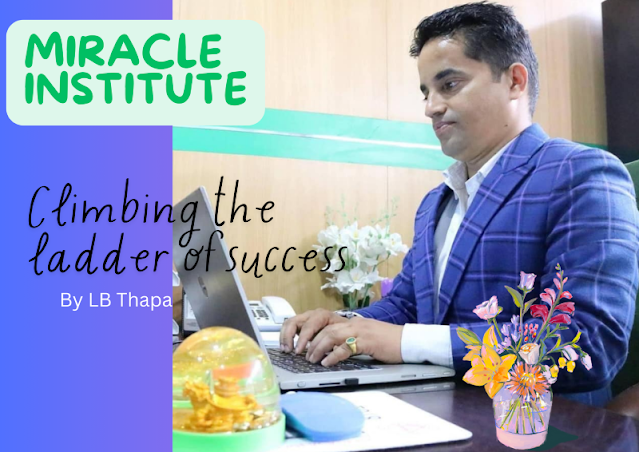BRINGING REVOLUTION IN LIVESTOCK DEVELOPMENT
 |
| An aerial view of Livestock Development Farm, Pokhara. Photo: LB Thapa |
I strongly suggest the visitors to Pokhara to include this place in their menu of Pokhara sightseeing. You don’t need any guide to visit this place. Take mountain bike from Lakeside and paddle comfortably from Lakeside to Lampatan, about 5km away from Lakeside.
By LB THAPA
(This article was originally published in The Rising Nepal)
Livestock Development Farm (LDF) at Lampatan, Pokhara is the only leading government undertaking livestock development farm in the western region of Nepal. It has been working in the field of livestock development for the last five decades. The LDF was established by the help of New Zealand government in 1960. Since then the farm has been rendering its services uninterruptedly.
Livestock Development Farm (LDF) at Lampatan, Pokhara is the only leading government undertaking livestock development farm in the western region of Nepal. It has been working in the field of livestock development for the last five decades. The LDF was established by the help of New Zealand government in 1960. Since then the farm has been rendering its services uninterruptedly.
With the establishment of LDF,
it started working on developing quality breeds of sheep. In the beginning,
there were only sheep, so that local people began calling Livestock Development
Farm as Bhedi Farm. Today everyone knows LDF by the name of Bhedi Farm.
The project had started
crossbreeding local Barual sheep with exotic Polworth breed. However, the whole
effort was not very successful as Baruwal sheep from high hills could not adjust
in Pokhareli climate. As Barual sheep failed to acclimatize the Pokhareli
climate, Kage, yet another native breed of sheep was introduced. This was a successful
venture and the project was continued. In the meantime, the New Zealand
assistance finally ended in 1964.
However, since 1969 the
farm diversified its working area and included buffalos, pigs and poultry. Under
the initiation of Gandaki Zone Agriculture Development Programme, GTZ, a German
agency for technical co-operation, provided vital assistance to LDF from 1975
to 1980. With this aide, the farm could develop several important
infrastructures and imported machinery & tools including special kinds of
animals and birds for the research and breeding development purpose.
At present Livestock
Development Farm (LDF) Pokhara is involved in developing high quality animals, birds,
seeds, saplings and helping farmers to provide them with latest technology.
These modern technologies help farmers to increase their farms outputs. This
has made many farmers to make a better earning from agriculture and livestock.
Speaking with this scribe,
Shambhu Raj Pandey, senior livestock development officer, shed more light on the
history of animal development in Nepal in general and Livestock Development
Farm in particular.
He said: “The history of
livestock development in Nepal is quite old. It started from 1917 when Jung
Bahadur Rana, then Prime Minister of Nepal, imported special types of cows from
England.
“Those cows were big,
sociable and give more milk. However, importing them from England was a tedious
process and expensive too. Hence, the import of such cows could not be
continued for long. In later years, Nepali government began importing special
types of cows from India. This way the number of cows rapidly increased in
Kathmandu and elsewhere in the country.
“In the next stage of development,
a Livestock Improve Section (LIS) was established in 1952, with the purpose of
increasing genetic potentialities of indigenous cows. Then in 1960 New Zealand
government helped to establish Livestock Development Farm at Lampatan,
Pokhara”.
Though Livestock
Development Farm had started with the purpose of producing quality sheep for
the breeding and development purpose, nowadays LDF has shifted its interest from
sheep to livestock. Due to growing interest of Nepali farmers in buffalos,
goats, pigs and poultry, the LDF did also include all these animals and poultry
within the range of their research and development”.
 |
| Black Astrolan chickens are known for their unique taste. Photo: LB Thapa |
 |
| Boera goats are African specie. They grow much faster than other normal goats. Boera goats weigh around 30 kg in just six months and female goats mostly give twins birth. Photo: LB Thapa |
 |
| A pool for buffaloes. Photo: LB Thapa |
 |
| Livestock Development Farm (LDF) experts regularly visit various villages and give training to the farm owners. Photo: LDF, Pokhara. |
 |
| Livestock Development Farm is the home of several exotic breeds of pigs such as Yorkshire, Landrace, Hampshire and Duroc. Photo: LB Thapa |
 |
| Mother pig with her newly born piglets. Photo: LDF, Pokhara |
 |
| Murrah are typical Indian buffaloes. Now there are 250 Murrah buffaloes at the farm. Photo: LB Thapa |
 |
| These senior LDF staff take care of Pig Unit. Photo: LB Thapa |
At present, LDF is rearing
Boera goats…these are of special kind of goats. Boera goats are African specie.
They grow much faster than other normal goats. Boera goats weigh around 30 kg
in just six months and female goats mostly give twins birth. This is an added
advantage for the goat farmers.
Normally, red meat
contains high amount of cholesterol, but Boera goats contain extremely low
amount of cholesterol. This is the reason why the meat of Boera goats is much
safer from health point of view.
“Many people misunderstand
the purpose of Livestock Development Farm and they come to purchase goat,
buffaloes, pigs and chickens in bulk” said Shambhu Raj Pandey, senior livestock
development officer and continued. “The main purpose of LDF is to conduct
research and developing high standard species of goats, sheep, buffaloes and
poultry. Our job is not selling livestock in bulk and making profit”.
A large number of
buffaloes are enough to make their presence felt at Livestock Development Farm,
Pokhara. Many of these buffaloes are of special breed. After regular
experiments, the experts at LDF found that Murrah buffaloes were much more
capable to integrate in Pokhareli environment.
“Murrah buffaloes are
typical Indian buffaloes. Now we have 250 Murrah buffaloes. At present, 43
buffaloes daily give over 45 liters of milk. Local people are fond of Murrah
buffalo’s milk as it is much tastier than other buffalo’s milk. They come early
in the morning and stand in a queue at the dairy of LDF. We produce yoghurt,
butter, packet milk, paneer etc. and sell locally from our dairy. These items
are fully organic that’s why many people regularly visit to purchase such dairy
products,” informed Shambhu Raj Pandey, senior livestock development officer.
Pig farm is as big as
buffalo farm. Livestock Development Farm is the home of several exotic breeds
of pigs such as Yorkshire, Landrace, Hampshire and Duroc. Nepal started importing
such exotic breeds from 1957. These are high quality breeds and largely
productive from business point of view. Local pigs such as Chwanche, Hurrah,
Bampudke, Pakhribas black and Dharane kalo banngur have good taste while eating
but they grow slowly and do not weigh more meat.
“Pig farming is still at
the developing stage. We are regularly experimenting to develop hybrid pigs,
which grow fast and weigh more meat. We have high breeds of pigs, which we
supply to several professional pig farm owners. We regularly organize training
programme for the pig farm owners and inform them how they should take care of
their pigs and get maximum benefits,” informed Shambhu Raj Pandey.
Poultry farm is most
systematic at Livestock Development Farm. There are two types of chickens, which
are very special. These breeds of chickens are not supplied from anywhere in
the country except the LDF. Black Astrolan chickens are completely black,
whereas New Hampshire chickens are bright maroon.
“We produce daily about 4000
to 5000 chicks to sell and still we are not being able to meet ever growing
demand. To produce chicks we have two modern incubators. One incubator machine
makes the eggs ready to be hatched and the next machine hatch those eggs to make
chicks. In the entire western region, LDF is the only farm where eggs are
hatched, produced and chicks are distributed at a large scale”, said Dip
Bahadur Bharati, in charge of poultry farm section.
“There are doctors, senior
technicians, scientists and advisors to guide the livestock development
activities smoothly. Though vital positions for scientists are still vacant, despite
that we are working hard to achieve our set goals. We have our own fodder
production unit that produces fodder to feed animals and birds we have in the
farm. To make sufficient fodder, the LDF has enough land to produce special
grasses, which are rich in nutritious values.
“A new technique is
followed to make silace. We keep grass underground for a certain period and
when the grass is taken out silace is ready to give buffaloes. All buffaloes
like silace very much,” said Arjun Bhandari, a technician at Livestock
Development Farm (LDF).
Shambhu Raj Pandey, senior
livestock development officer, has even more ambitious scheme for the targeted
farmers.
“We want to promote home
stay in the region by supplying special, hybrid chickens to poultry farm
owners. They can offer tasty chicken items to tourists who come to their houses.
This way, tourists will have opportunity to eat chickens that will have a
unique taste. However, at present mostly broiler chickens are served to
tourists which do not have great taste”.
Livestock Development Farm
has a long history of dedicated service to improve the quality of livestock in the
country. Over the years, LDF has gone through several difficulties but nothing
could stop them from developing high quality breeds of animals and birds to
assist farmers. Today several livestock farm owners of the country have been
receiving benefits from the services provided by Livestock Development Farm,
Pokhara.
Thank you very much for reading this article. I
hope you liked this article. I will be glad if you take little time and make a
comment about this article. Your comment is highly appreciated.
 |
| LB THAPA is a freelance writer & author. |
LEGAL WARNING
All rights reserved. No
articles and photos published in this blog can be reproduced without the prior
written permission of the author. Legal action will be taken immediately if any
articles or photos are reproduced without the author’s knowledge. However,
articles or photos can only be reproduced by duly mentioning the author’s name
and the blog's name (read2bhappy.blogspot.com). The author must be informed by sending an email. All
articles and the photos published in this blog are the copyright property of LB
THAPA. LB THAPA.











.png)
Comments
Post a Comment